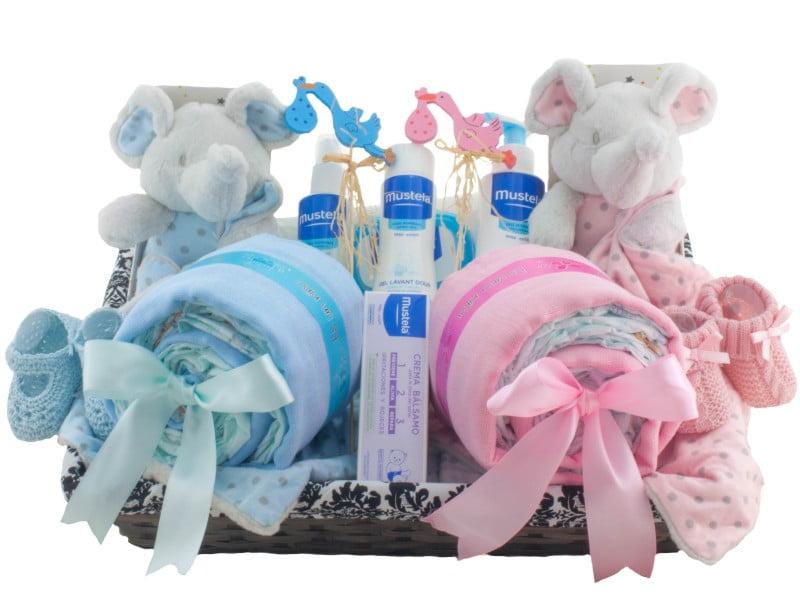Everything to buy duplicated (and what not) when babies arrive two by two
It is a myth that "you have to eat for two" when you are expecting a baby... almost the same as the "you have to buy for two" when you are expecting double babies. It is true that some of the objects we need for baby care will increase exponentially if we have twins, but others can be used not only between babies who share the same age, but also between siblings who are born very close together. Here is a checklist with what we are going to need to buy x1 and x2 when babies come in pairs.
VIEW GALLERY
SHOPPING x1
1. Bathtime. Bathing the baby can be more or less complicated for us, but unless we have two bathtubs at home, or we coordinate perfectly between mom and dad to save time, we probably only need a single set of bathroom accessories, especially the bathtub. The same goes for baby nail clippers, hairbrushes, thermometers, changing mats, talcum powder, creams and wipes (although these will run out faster).
2. Toys. Especially when children are very young, and before they start to feel the need for their own things: babies do not need to have all their toys in duplicate, especially mobiles, colored blankets, rattles and cloth books. It is a good way to start them in the habit of sharing things from the cradle.
3. Twin stroller. Twin strollers have space for two babies, and are the preferred option today for parents of twins and twins, since it allows only one parent to leave the house for a walk without the need for another adult. The twin strollers have different positions (sitting, reclining or lying down) and many other structural combinations that allow babies to go at different heights, on their backs or facing each other. It is also possible to make a combination of stroller and kepina, so that one of the babies is always in contact with mom or dad, and the other lying down.
4. Clothes. Especially the basics for newborn babies such as frogs, hats, pajamas and t-shirts. Look for patterns and colors that are interchangeable, whether the two babies are the same gender or a boy and a girl.

5. Cradle. Normally sharing the crib is only possible for very young babies, although it is an option that allows you to cut the many expenses that will be incurred upfront, especially for first-time parents who have to invest a large part of the family budget in the arrival of babies during the first few years. months. A second crib can be added later, when they are a little older, reserving this division for nights and nap time, and letting them share the same crib during the day.
6. Lactation. Virtually everything related to breastfeeding is the same in a single pregnancy as in a multiple pregnancy: nursing bras, a special cushion, a sterilizer, a breast pump... Of course, if you are going to use formula milk, or use a breast pump to feeding both babies at the same time with the help of another person, you will need to multiply the number of bottles, or wash them much more often.
7. . For example, the monitor to listen to the sleep of babies, or a humidifier.
SHOPPING x2
1. diapers. One of the baby's biggest expenses are disposable diapers, which not only take a bite out of the family economy but also to the environment. A properly fed baby needs between six and ten diapers a day for the first two months; figures that are multiplied by two after a multiple birth. That is, close to 1,400 diapers in just eight weeks. To reduce the number of diapers that are thrown away in those critical weeks, you can opt for cloth diapers, and juggle with the washing machine and family laundry to be able to reuse them without generating waste.
2. Seats approved for the car. Essential from the moment we leave the hospital: we are going to have to buy them in duplicate for many years (child restraint systems vary according to the weight, age and height of the child, and in addition to the seats, that they dream of using up to four years old, approved booster cushions and restraint systems are recommended for children under 12 even when they exceed the regulation height), so it is better to get used to the idea from the beginning.
3. Nasal aspirators and saline solution. Babies often have a runny nose, especially in winter, and are also prone to colds. When we have two babies at home, the mucus multiplies and also the risk of one infecting the other. It is best to use different systems to clean the nostrils of both babies, preferably each one labeled with the name of its small owner.
4. Highchairs. When we go from breastfeeding to solids combination feeding, is it time to rethink how we are going to feed both babies: alternating spoonfuls between one and the other? Or first one and then another? How do we decide which of the two is hungrier? This decision is also personal, although it is advisable to have two identical chairs to sit the babies together at the table in case we decide on the first option.
5. Pacifiers. Better to have several, and always different for each one, preferably with different colors or designs. Pacifiers are best reserved until lactation is well established, usually after the fourth week.
HELLO! The total or partial reproduction of this report and its photographs is prohibited, even citing their origin.









Related Articles